Best in Field
Dogs in remarkable roles, aligning instinct with craft and calling.
Pre-dawn dew, misty breath, insects humming. Anyone who has stood in silence on a hunt can attest to the Keats-esque thrill of the moment before. What shatters the anticipation before it crystallizes? The loud and clear bark of a setter at work.
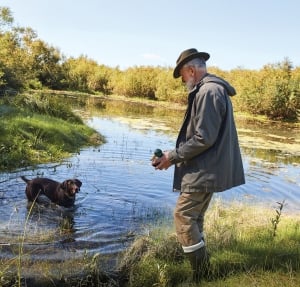
Training a retriever.
There’s something almost transcendent about the relationship between humans and dogs, which goes back thousands of years. It’s instinctual, traditional, collaborative and purpose-driven, especially for sporting and working dogs, who have stood by their owners for generations. Eager to please, trainable and indefatigable in some cases, these dogs have found “employment” throughout history in occupations beyond hunting assistants, as far ranging as art protectors to seizure alert dogs.

A great Pyrenees watches over a flock of sheep.
Man’s best friend may also be our best teacher. The relationship between a pup and its trainer is fortified through deep connection and guidance. “The dogs we adopt teach us what they need to thrive, and in return, they lead us to making discoveries about the animals we are studying and the hidden language of the forest,” says Jennifer Hartman, Co-founder and Director of Operations and Communications at Rogue Detection Teams, a conservation organization that pairs dogs with researchers. Spending every day with their dogs, through laborious hikes and difficult terrain, a trust and bond are built beyond words.
The Broadfield Experience
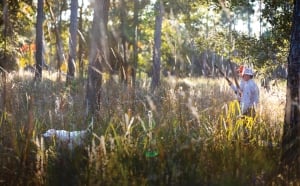
Dogs are an integral part of life at Broadfield, the Sea Island Sporting Club and Lodge. Guests and members of Sea Island can access Broadfield for half-day activities such as quail hunting and clay shooting, where dogs are at the center of it all. Part of the old Cabin Bluff property dating back to 1927, the 20,000 acres is a veritable playground for outdoor activities. “We have 43 English pointers and walkers on property, with a few German shorthaired pointers and cocker spaniels who flush,” says Lee Barber, Manager at Broadfield Sporting Club and Lodge. “Dogs are a big part of the Broadfield experience.” There are usually two point dogs on the ground and a flusher to assist, with sometimes up to six or seven on the quail buggy, rotating out. Members and guests can even bring their own dogs on the twice-daily continental quail or pheasant hunts.
DOGS AT WORK
Three breed groups are predisposed to work: working dogs, herding dogs and sporting dogs. The working dog group includes breeds such as dobermann pinschers and great danes, while the herding group includes German shepherds and border collies. The sporting group, also known as gun dogs or hunting dogs, includes classic dogs such as golden retrievers, English pointers and cocker spaniels. These breed groups have long proven their capacity for work and enjoyment of it. “It is ingrained in them, hard-wired,” says Mari-Beth O’Neill, the VP of Sports Services for the American Kennel Club (AKC).
While all dogs possess an otherworldly sense of smell, sporting dogs have a personality and work ethic that makes them unlike other dog breed groups. Beyond the hunt, sporting dogs specialize in everything from seeing eye dogs for the visually impaired to seizure alert dogs for those with epilepsy and even detecting pests at a museum, a real job a Weimaraner has at the Museum of Fine Arts Boston. They can perform search and rescue missions via water scenting and have even been used to monitor sea turtle nests.
The Natinga program at TN Coopers, a heritage wine barrel-making company, employs a special team member, the labrador retriever. TN Coopers has 10 dogs that have been specifically trained to detect contaminants that can spoil wine quality. They undergo 30-minute daily training sessions, which are followed by rest, and the dogs work in pairs. They are responsible for inspecting everything from lumber yards to the finished products. “Our labradors are happy, well-cared-for members of the TN Coopers family,” says Marketing Manager Rocío Velso. “They enjoy time to play and socialize, and receive constant affection from our team. They are our guardians of quality.”

TN Coopers Natinga Program
Famously, Tuscan Lagotto Romagnolo dogs are bred to hunt truffles, and that tradition has found roots in the Southern United States via pecan truffle hunting. Pecan truffles are gaining traction regionally as a delicacy for their milder, nuttier flavor. The truffles grow near pecan tree roots and are snuffed out in the second half of the year. Pecan Ridge Plantation, located in South Georgia, has labrador retrievers for this purpose.
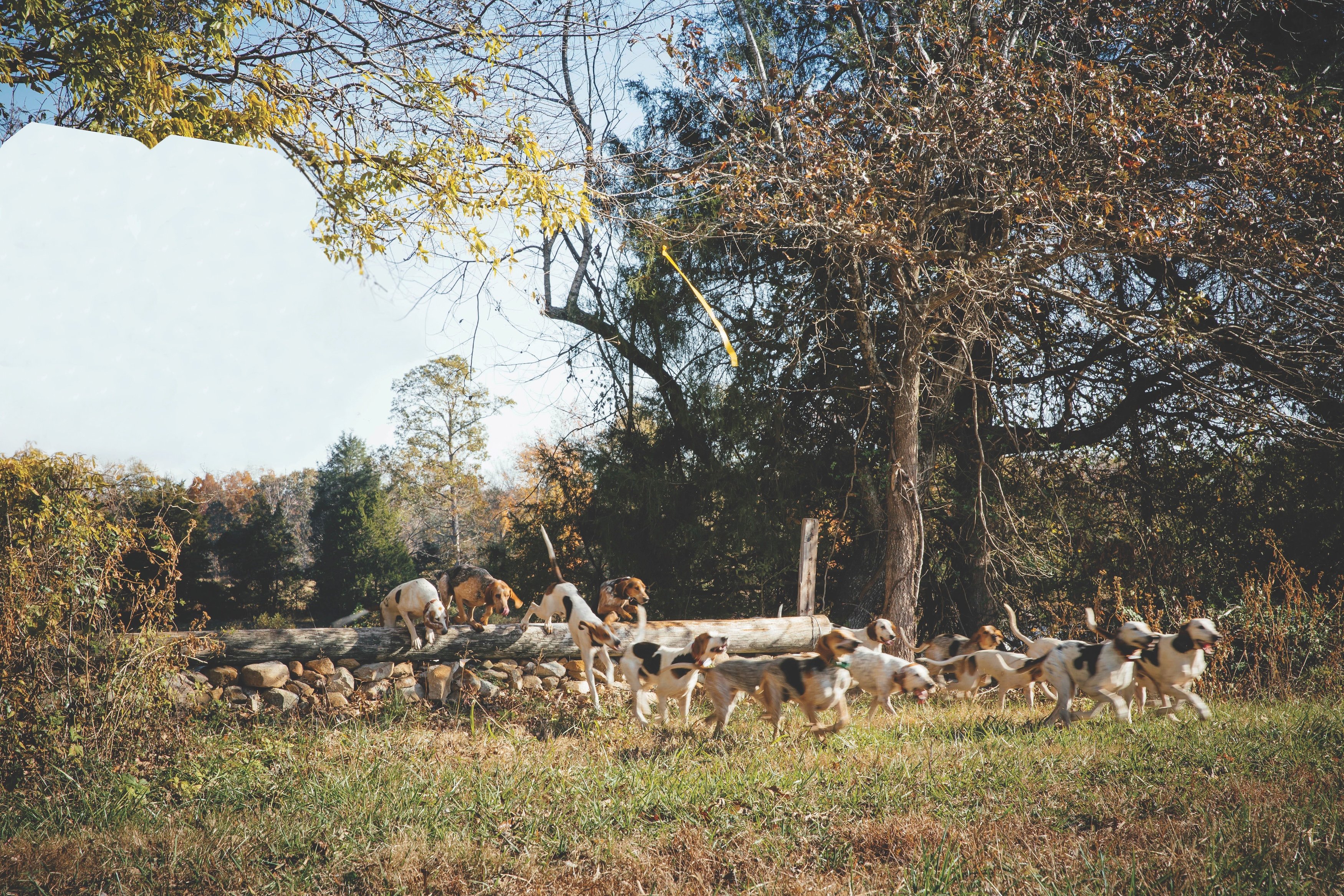
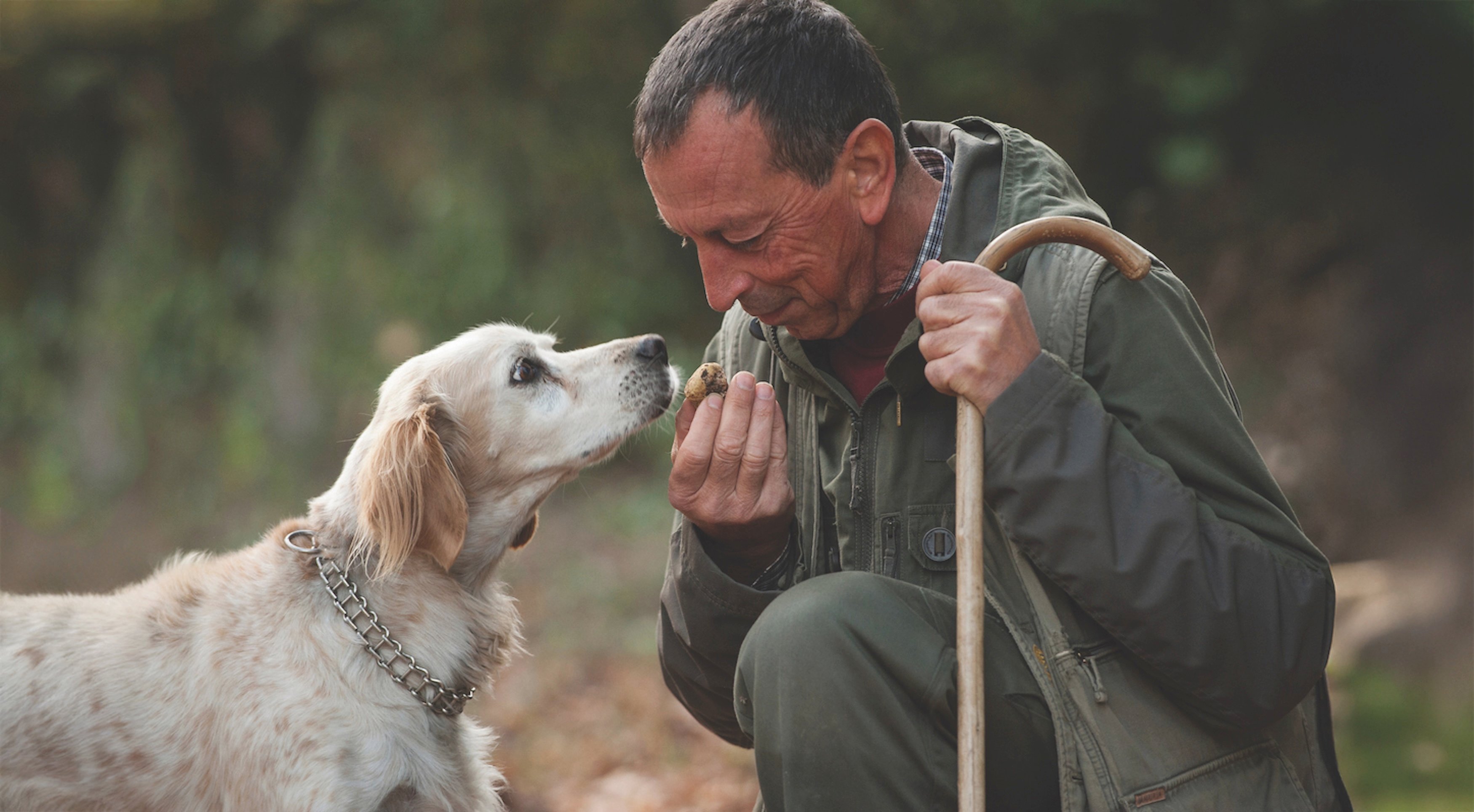

(left to right) Dogs On The Trail; Truffle Explorer; Rogue Detection Conservation Dog, Echo.
Images Provided by Geoff Wood, Susan Wright and Holly Cook.
“Labs are the number one companion dog in the country because they’re so easy to get along with and easily trained,” O’Neill says.
Working breeds are also well-known for their tireless ethic and enthusiasm for work. A Belgian Malinois named DJ assists the Atlanta Botanical Gardens with finding conservation-worthy orchid species by scent. Alaskan malamutes are known across the world for their ability to haul heavy freight in harsh weather conditions, and relish in the work.
The South’s hunting culture has even seen the creation of regionally specific, highly specialized dog breeds. One example is the Carolina dog, also called the “Dixie dingo,” which is known for its natural evolution over time and obsession with small game. The Plott hound, a scent-trailing dog, is recognized as the state dog of North Carolina and was originally bred in the 1700s by one family for the sole purpose of hunting bears and large game. South Carolina’s state dog, the Boykin spaniel, is valued for its skill in flushing wild turkeys and was specifically bred as a marsh dog, adept at swimming. The Catahoula leopard dog, a baying breed used to hold hogs in place, has specific qualities that make it adaptable to swampland.
Purebred dogs aren’t the only ones that can offer unique skillsets. Rogue Detection Teams don’t have any breed requirements. Their main objective is protecting wildlife, but the welfare of each dog is a top priority as they navigate the rugged outdoors.
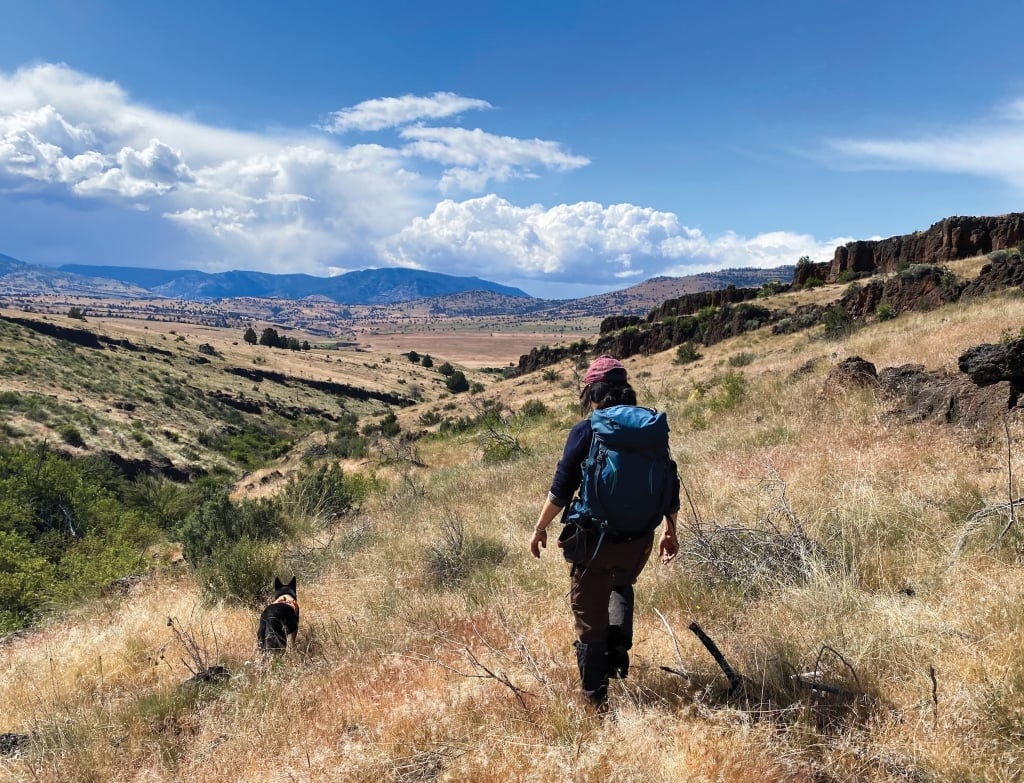
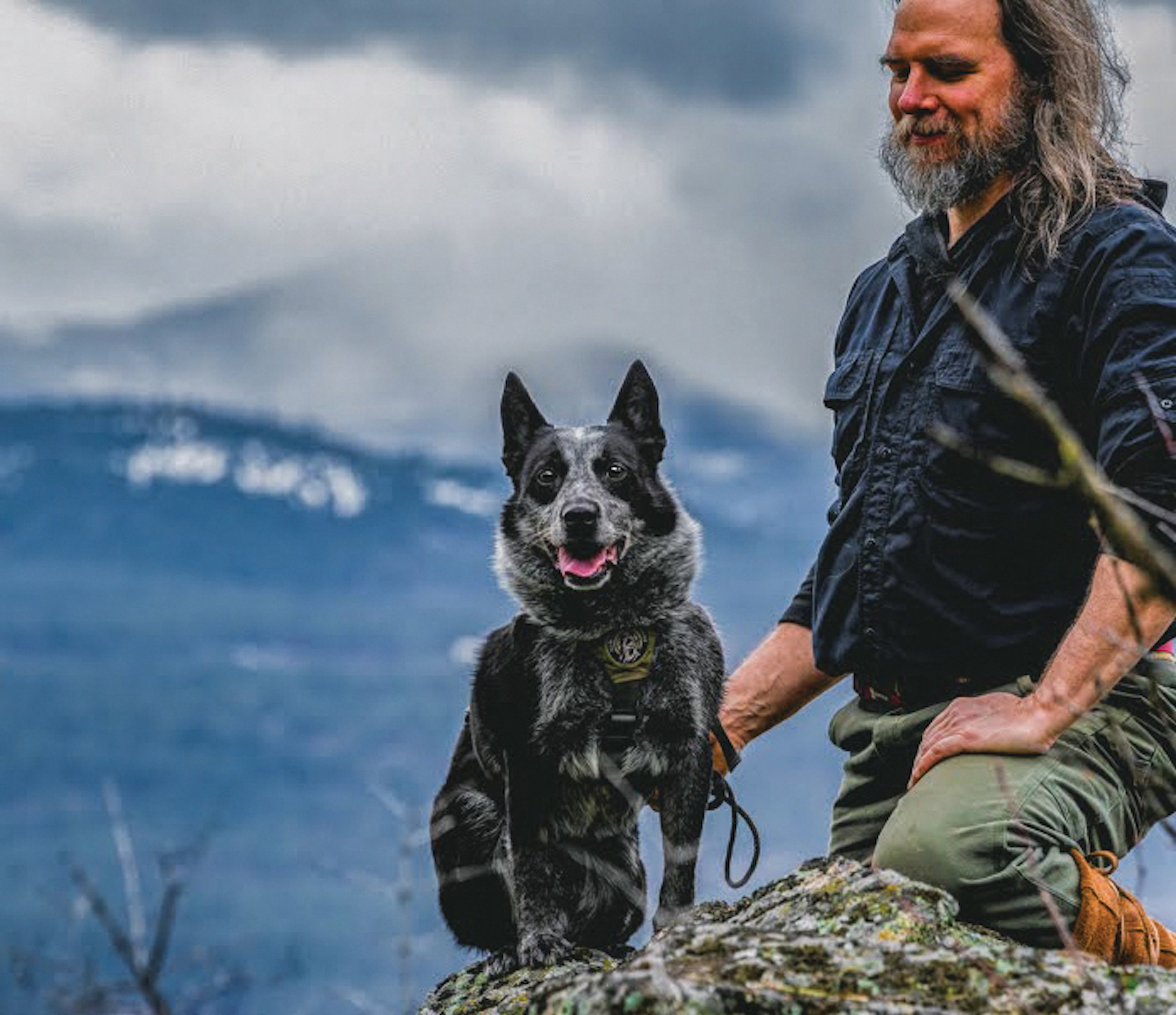
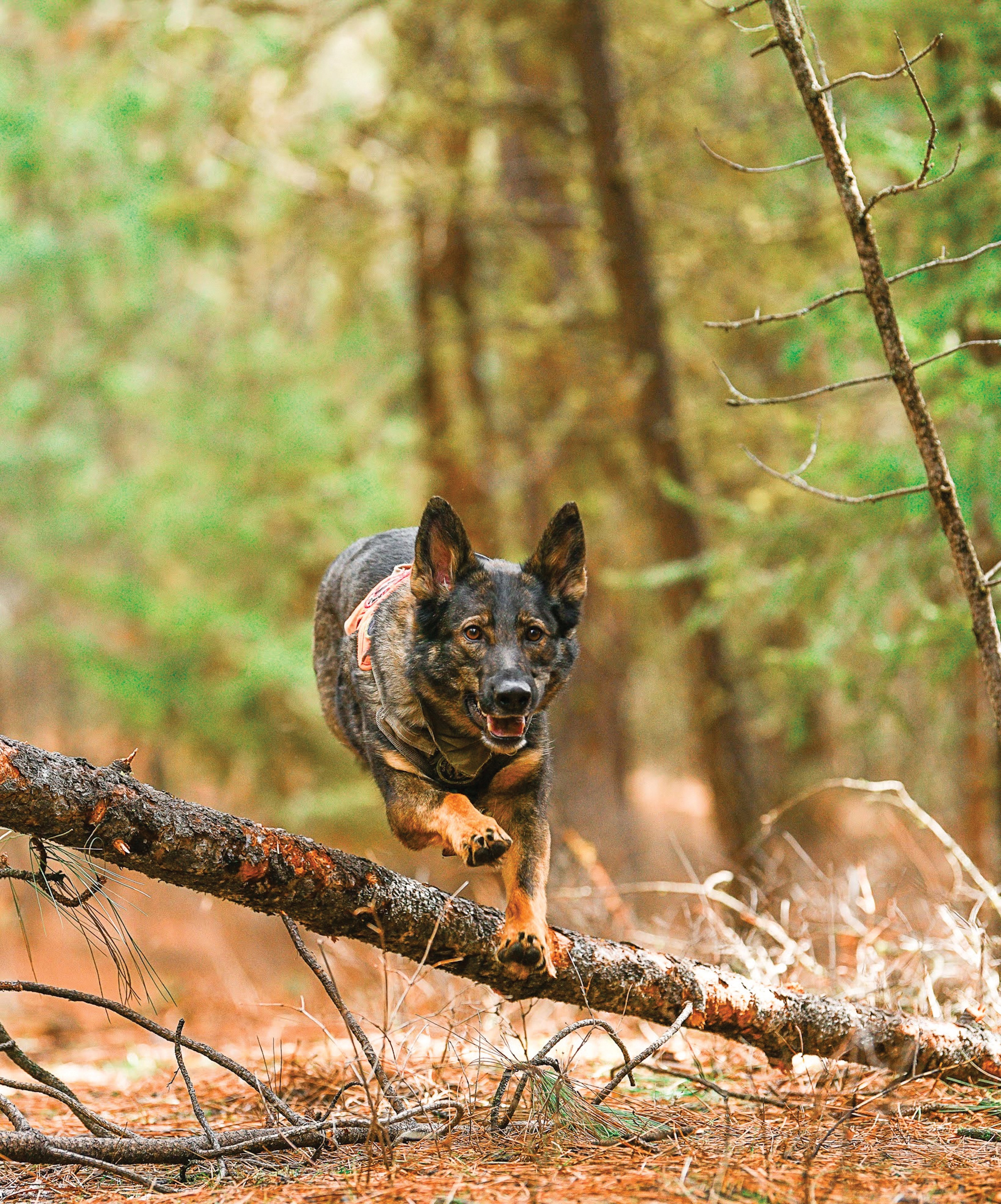

Rogue Detection Founders Jennifer Hartman and Heath Smith in the field with conservation dogs, (left to right) Filson, Pips, Stern, Max and Scooby
“Mixed-breed dogs that have been forgotten or cast aside are interviewed for adoption, although the only criterion is that they love to play fetch,” says Hartman. “This is our building block for connecting and communicating with them. Fetch is also their reward for detecting data.” The dogs are trained and go out into the field, assisting with everything from detecting endangered species to gathering field data in difficult terrains. “Our dog teams can quickly survey vast areas and gather data similar to telemetry, without the heavy investment of human hours required for daily tracking,” she says.
While dogs are not hired to work, there is immense pride for the pups that are bred to desire this work. Siska, a Dutch-shepherd mix adopted from the National Search Dog Foundation, discovered a profound finding in the Eastern region of the Sierra Nevada. “She detected the first den of an endangered Sierra Nevada red fox. With an estimated fewer than 20 to 30 of this species left, her detection confirmed that this rare canid was breeding and continuing the next generation,” exclaims Hartman. This heartfelt and special moment at Rogue Detection Teams is a testament to the commitment of their dogs and instructors alike on the journey for the discovery and conservation of wildlife.
MADE FOR THE OUTDOORS
Working or sporting dogs are unlike your typical house pet. There is a strong desire to work, explore and discover new terrain and all its findings.
At Rogue Detection Teams, most of their adopted dogs were viewed as unfit house pets as they were felt to be too exuberant. Yet, this is the exact type of dog that will sniff out the slightest clue of a notable detection. A core part of the selection process is choosing a dog that wants to work. When comparing a dog accustomed to a pet lifestyle, Hartman says this: “Expecting pets to take on this role would be unfair, both to them and to the wildlife that depends on trained detection dogs to locate vital data.” The typical species that a trained dog may search for to gather data on could be the same species that a household dog may chase at an excited sighting.
Every dog serves a unique purpose in their lifetime, but the strong distinction in purpose can be the key difference in a dog fit for indoors or outdoors.

German Shorthaired Pointer
A RELATIONSHIP LIKE NO OTHER
Upon feeling ready for a dog, Manda Michaelis began hunting at 40 years old. “Our family has always been big into the outdoors, and we wanted a dog that could live that lifestyle with us and have the endurance, stamina and desire for it,” she says.
One German shorthaired pointer named Benny later, Michaelis was all-in on life with a sporting dog. She became the Georgia-Florida Shooting Dog Handlers Club’s first female member, guiding upland hunts across the Red Hills Region of Georgia and Florida.
Michaelis, who is a deputy sheriff and mom, puts in the daily work required to keep her dogs fulfilled. She believes that her dogs must understand that they are part of a team on and off the field. “They have to know they are joined with us in a goal. Training and working with the dogs is a daily practice.” Attentive guidance can be key in developing a dog’s ability. “It’s my job to learn how they learn and break it down into pieces of training to help them be successful,” she says. The relationship is an unshakable bond, the definition of trust and two lives fulfilled.
Regardless of breed or origin, a dog at work is a sight to behold. Confident, determined and comfortable with nuance, there’s not much they can’t do when they put their minds to it with the help of a willing, able and loving handler.




